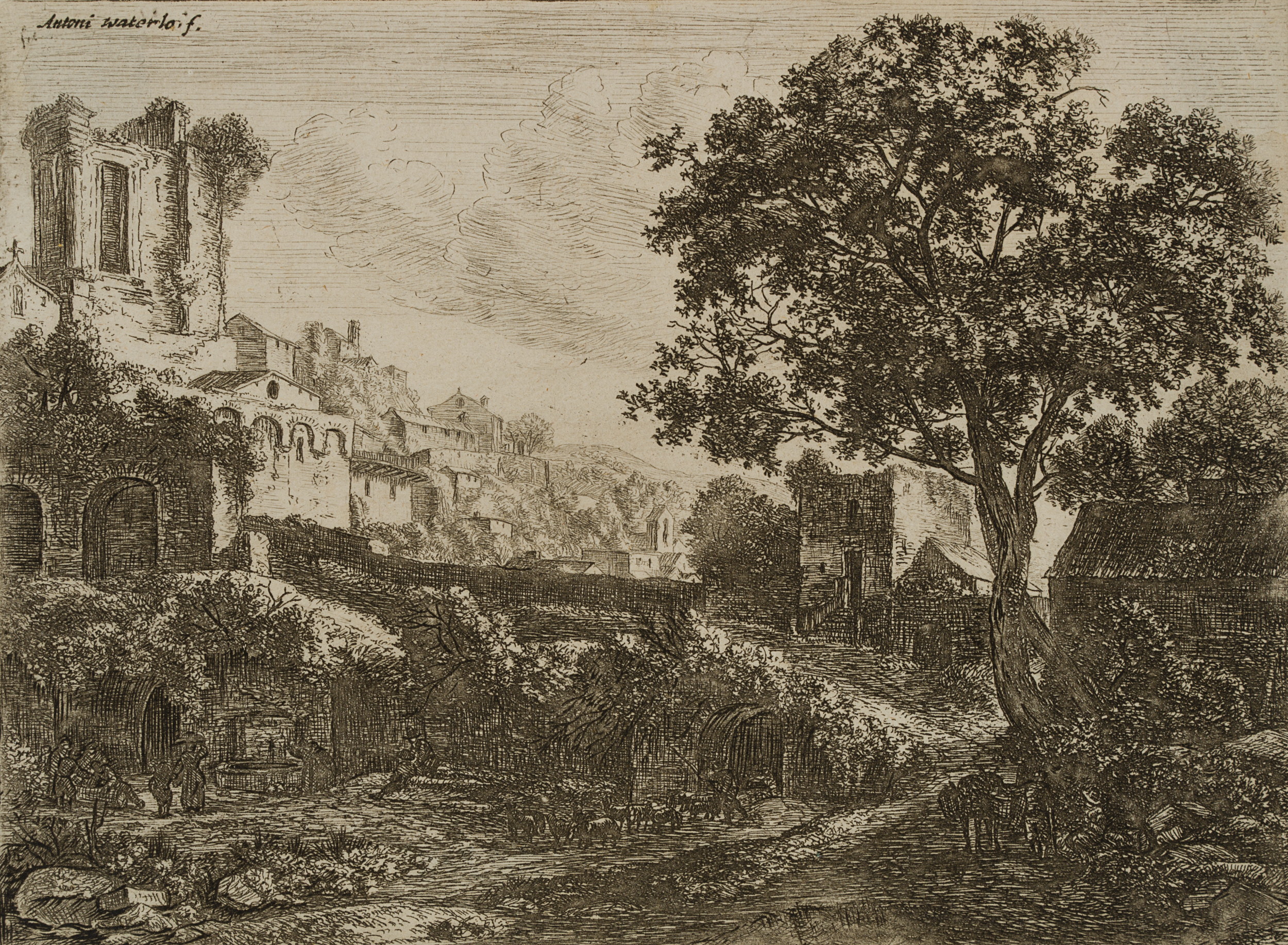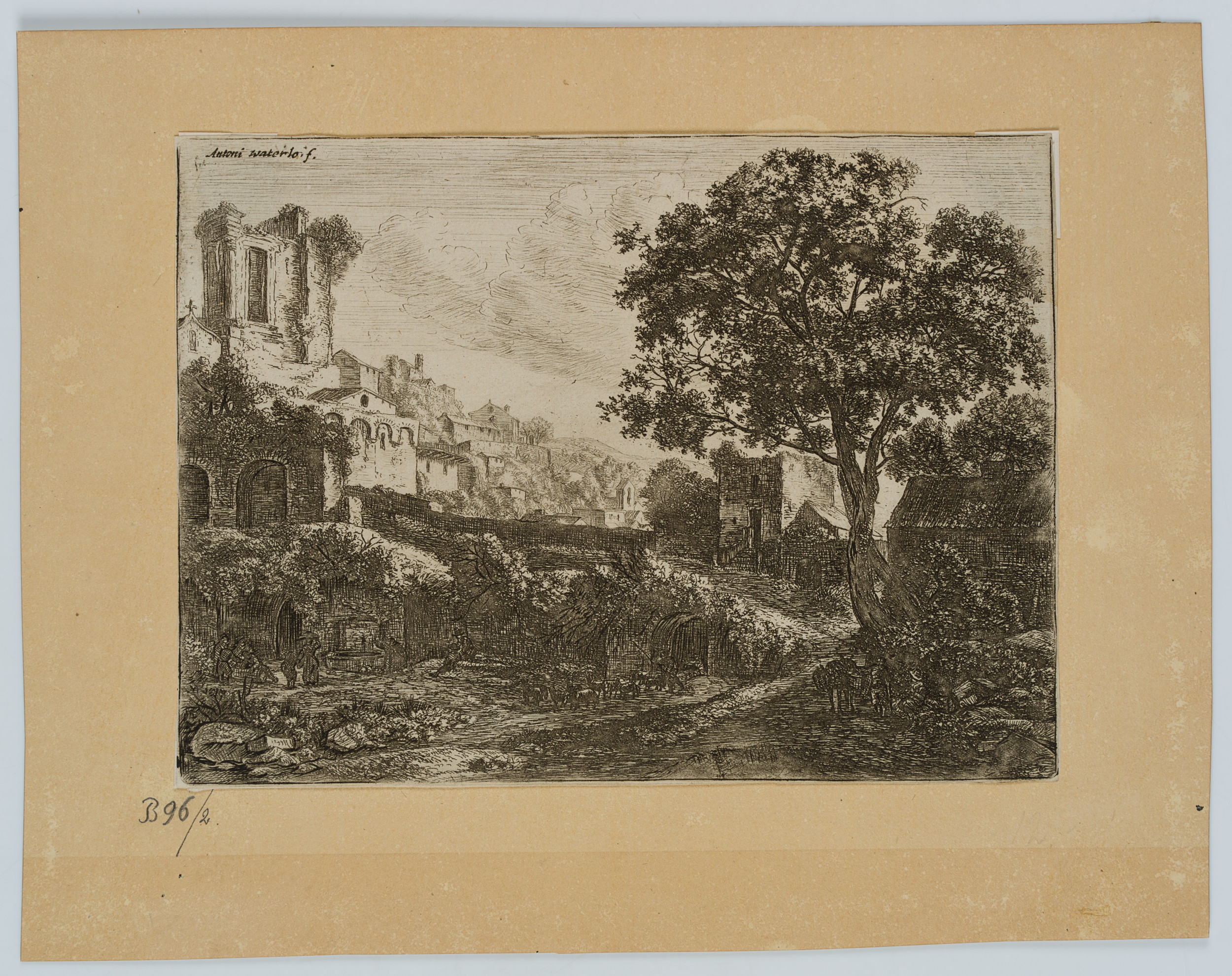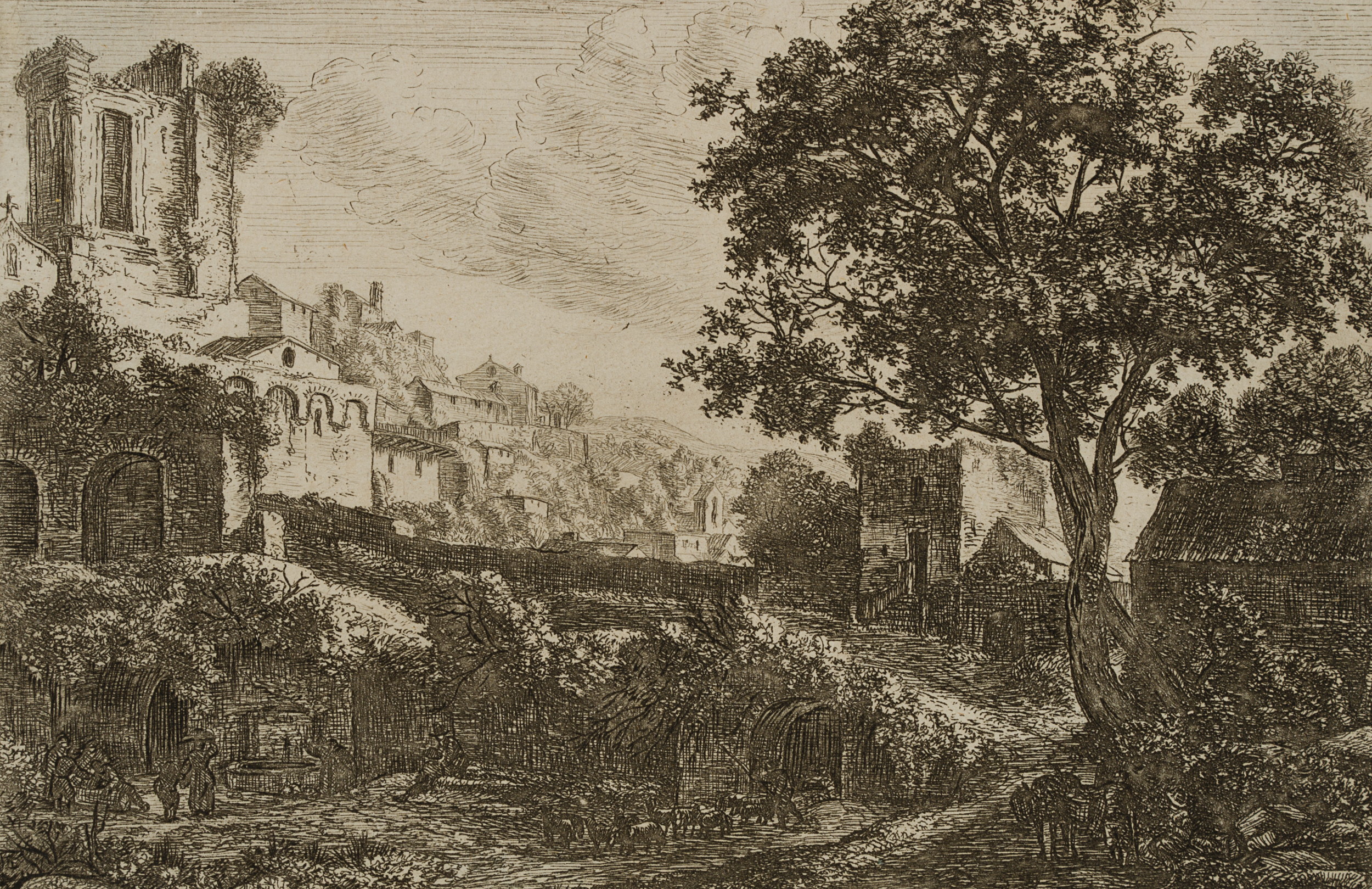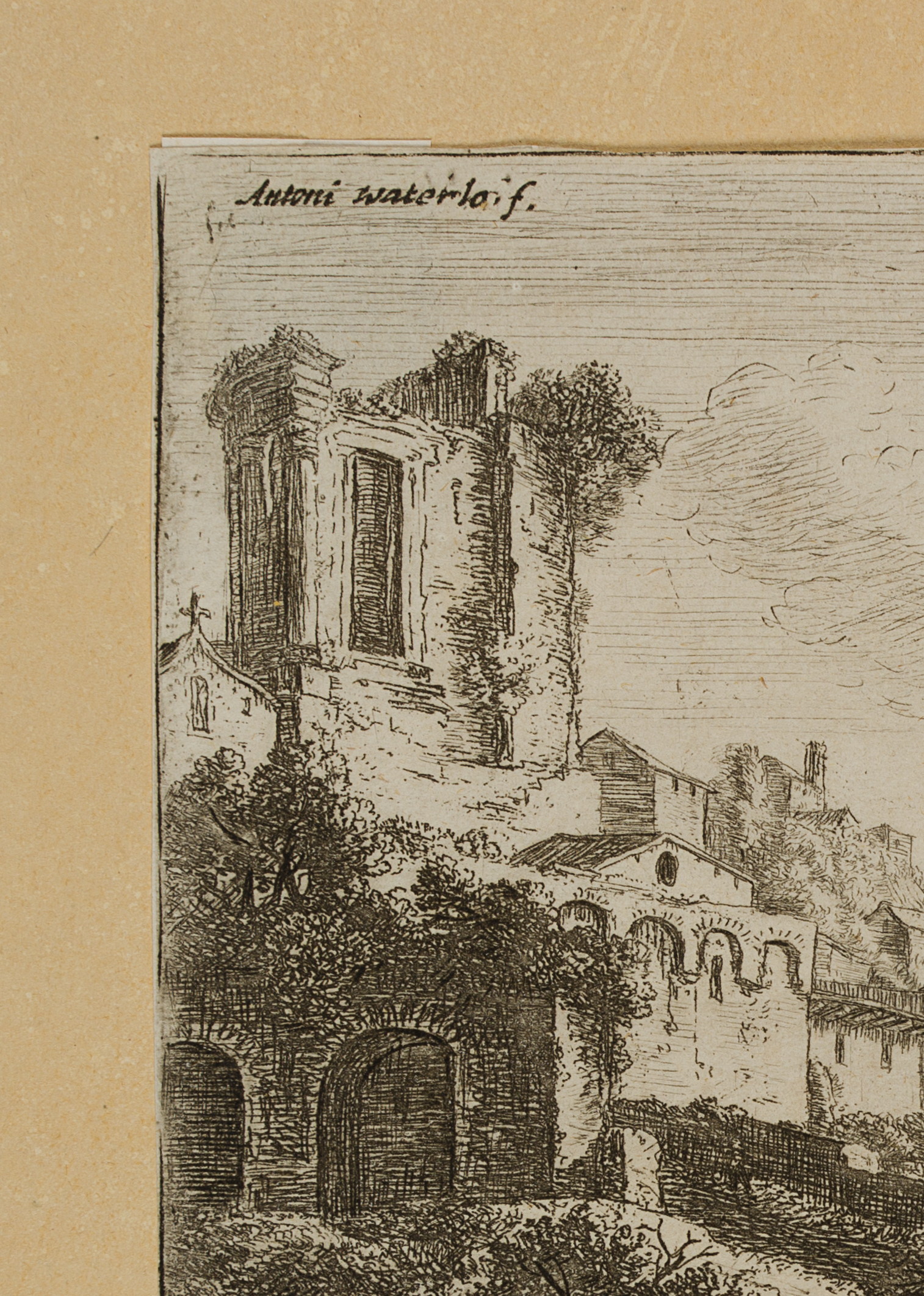Anthonie Waterloo (1609 Lille – nach 1676 Utrecht), Stadtlandschaft mit antiken Ruinen, um 1620, Radierung
- Technik: Radierung auf Papier
- Wasserzeichen: Teilweise sichtbar. unbestimmte Zeichen – Undeutlich: Fragmentierter Kreis, darin geschwungene Formen – Datierung:
- Bezeichnung: Oben links im Druck signiert: “Antoni waterlo. f.”.
- Datierung: um 1620
- Beschreibung: Vegetationsreiche Stadtandschaft von geschäftigen Staffagefiguren belebt. Der Blick in die Stadt wird flankiert von einem antiken Ruinentempel links und einem großen prächtigen Baum rechts.
- Schlagworte: Stadtansicht, Ruinen, Ruine, Ruinentempel, Antike, Alltag, Vegetation, Baum, Stadtbilder, Italien, Barock, 1600-1649
- Größe: 15,1 cm x 20,5 cm, Darstellung: 15,0 cm x 20,4 cm
- Zustand: Guter Zustand. Die Druckerschwärze ist stellenweise berieben und unscharf, sodass die Figuren vorne in der Darstellung schwer zu erkennen sind. Verso oben mit Kleberestspuren an den Ecken
English Version:
Anthonie Waterloo (1609 Lille – after 1676 Utrecht), Cityscape with ancient ruins, c. 1620, Etching
- Technique: Etching on Paper
- Watermark: Partially visible. – Indistinct: fragmented circle, curved forms within it – Date:
- Inscription: Upper left signed in the printing plate: “Antoni waterlo. f.”.
- Date: c. 1620
- Description: Vegetated cityscape enlivened by busy staffage figures. The view into the city is flanked by an ancient ruined temple on the left and a large magnificent tree on the right.
- Keywords: City view, ruins, ruin temple, antiquity, everyday life, vegetation, tree, 17th century, Baroque, Cities, Italy,
- Size: 15,1 cm x 20,5 cm (5,9 x 8,1 in), Depiction: 15,0 cm x 20,4 cm (5,9 x 8 in)
- Condition: Good condition. The printer’s ink is rubbed and blurred in places, so that the figures are difficult to recognise at the front of the image. Verso with traces of glue at the top corners




